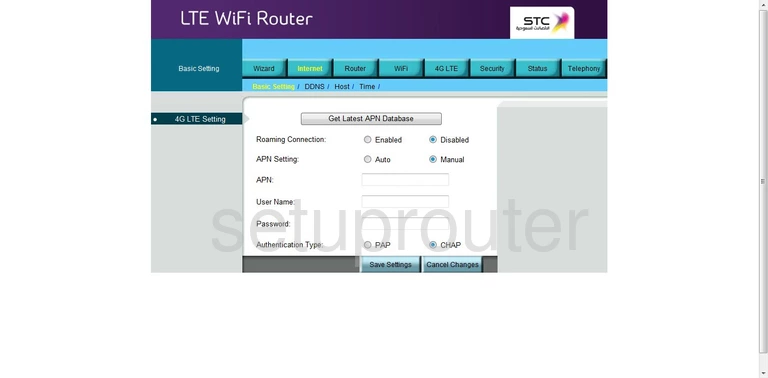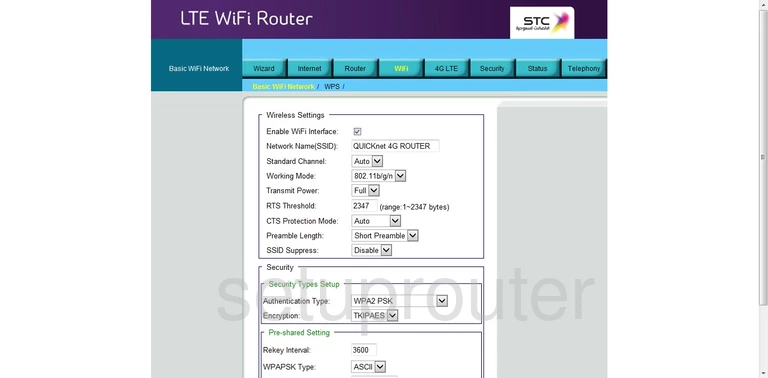The Bandluxe R508 router is considered a wireless router because it offers WiFi connectivity. WiFi, or simply wireless, allows you to connect various devices to your router, such as wireless printers, smart televisions, and WiFi enabled smartphones.
Other Bandluxe R508 Guides
This is the wifi guide for the Bandluxe R508. We also have the following guides for the same router:
WiFi Terms
Before we get started there is a little bit of background info that you should be familiar with.
Wireless Name
Your wireless network needs to have a name to uniquely identify it from other wireless networks. If you are not sure what this means we have a guide explaining what a wireless name is that you can read for more information.
Wireless Password
An important part of securing your wireless network is choosing a strong password.
Wireless Channel
Picking a WiFi channel is not always a simple task. Be sure to read about WiFi channels before making the choice.
Encryption
You should almost definitely pick WPA2 for your networks encryption. If you are unsure, be sure to read our WEP vs WPA guide first.
Login To The Bandluxe R508
To get started configuring the Bandluxe R508 WiFi settings you need to login to your router. If you are already logged in you can skip this step.
To login to the Bandluxe R508, follow our Bandluxe R508 Login Guide.
Find the WiFi Settings on the Bandluxe R508
If you followed our login guide above then you should see this screen.

You begin on the Internet Basic Setting page of the Bandluxe R508 router. To To configure the WiFi settings, click the link at the top of the page in blue labeled WiFi. Beneath that choose Basic WiFi Network.
Change the WiFi Settings on the Bandluxe R508

On this page, the first thing that should always be changed is the Network Name (SSID). This is the name that you use to identify your network from the others around you. Choose an original name but nothing that would give away who you are. If a hacker knows who you are you become a larger target. Avoid using any personal information here. For more information on this, check out my guide titled Wireless names.
Next you need to change the Standard Channel to channel 1,6, or 11. In the U.S. there are only 11 different channels you can choose from. Of these 11 channels, only three fit in the spectrum without overlapping one another. Overlapping channels cause interference with each other. But completely sharing a channel does not due to channel sharing software within the router. Use channel 1,6, or 11. For more explanation on this topic, check out my WiFi channels guide.
Next is the Working Mode. This is referring to the devices you are running on your network. The slowest and oldest is 802.11a and 802.11b, these were made in approximately 1999-2003. If you have devices made between 2003-2009, it is most likely 802.11g. From 2009-2012 they made 802.11n devices. If they are newer than that they may be 802.11ac. Since the age of most of your devices are varied we recommend using 802.11b/g/n. 802.11ac is new enough that this router does not offer it, upgrading your firmware should fix that if you happen to need it.
If you want to hide your network name so your neighbors can't see your network name, you need to Enable the SSID Suppress. Remember that does not mean you are invisible. A hacker has all the tools to scan for all networks, including hidden ones. This just acts as a camouflage. You are no longer easy to spot but you are not actually invisible.
The next section is titled Security. In this section you need to decide what type of security if any you want to use for your network and the transmission of your private data over the airwaves. We highly recommend using security. There are several different choices here. In the drop down list next to Authentication Type, choose the security you want to use. Check out my guide titled WEP vs. WPA for the differences in the protocols. We strongly recommend using WPA2 PSK. This is by far the strongest authentication you can use with today's technology.
Below that is the Encryption. There are basically two choices here, TKIP and AES. TKIP is older and has some flaws making it more susceptible to being cracked. AES is the better choice here, it has not been cracked yet.
The WPAPSK Type should be ASCII.
Below this should be a box reading Pre-Shared Key or possibly Passphrase. You need to enter the password here. This password is the one you will use to access your network. The password should be at least 20 characters long. Avoid using personal information. You should also avoid using words that can be found in a dictionary. We do recommend using symbols, capital letters, and numbers though. For help in creating a strong yet memorable password for your internet, check out our guide titled How to choose a strong password.
Don't forget to save before you exit. That's it, congratulations!
Possible Problems when Changing your WiFi Settings
After making these changes to your router you will almost definitely have to reconnect any previously connected devices. This is usually done at the device itself and not at your computer.
Other Bandluxe R508 Info
Don't forget about our other Bandluxe R508 info that you might be interested in.
This is the wifi guide for the Bandluxe R508. We also have the following guides for the same router: